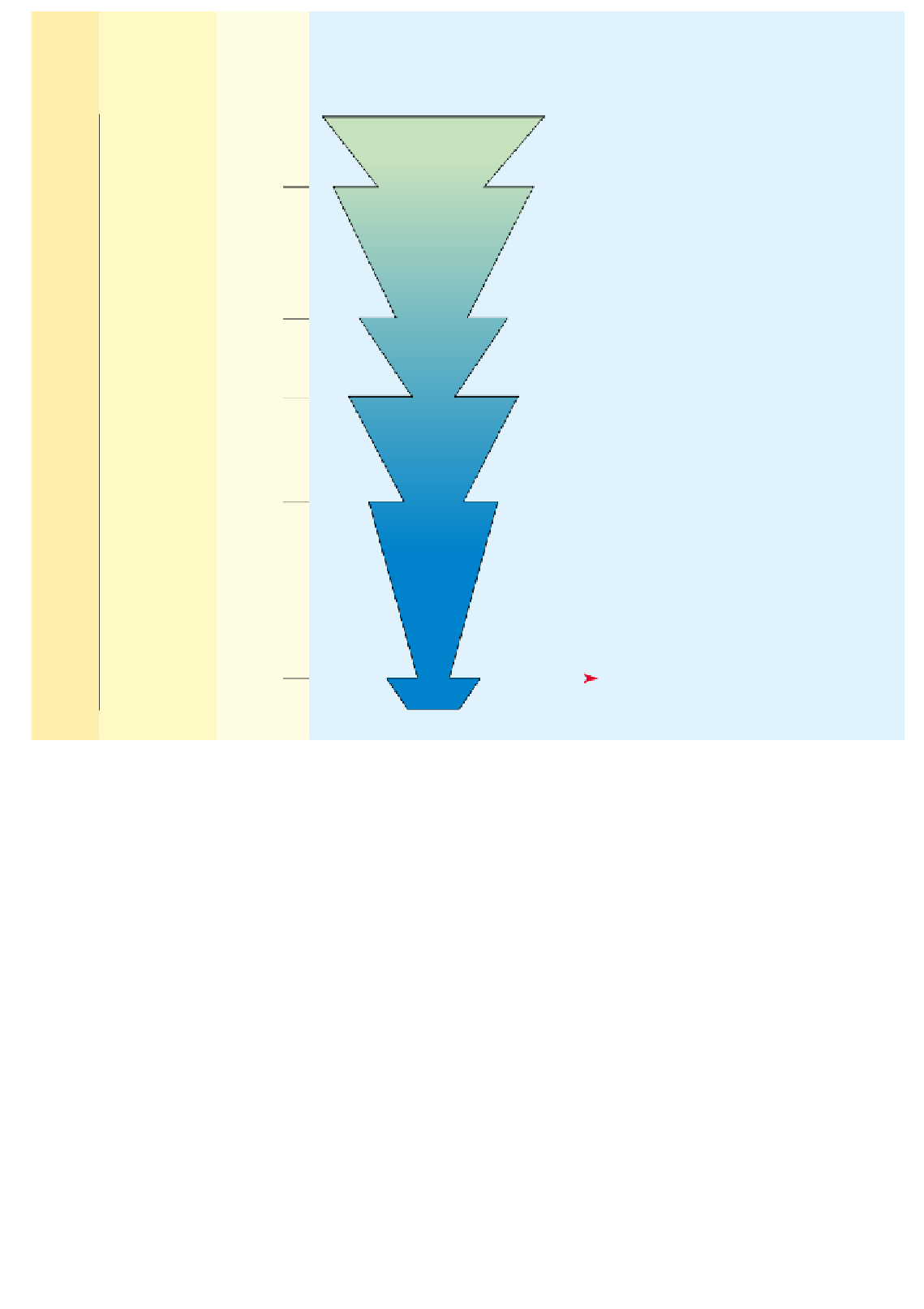Environmental Engineering Reference
In-Depth Information
On our short time scale, such major losses cannot
be recouped by formation of new species; it took mil-
lions of years after each of the earth's past mass
extinctions and depletions for life to recover to the pre-
vious level of biodiversity. We are also destroying or
degrading ecosystems such as tropical forests, coral
reefs, and wetlands that are centers for future specia-
tion. (See the Guest Essay on this topic by Norman
Myers on the website for this chapter.) Genetic engi-
neering cannot stop this loss of biodiversity because
genetic engineers rely on natural biodiversity for their
genetic raw material.
We can summarize the 3.7-billion-year biological
history of the earth in one sentence:
Organisms convert
solar energy to food, chemicals cycle, and species filling
different biological roles (niches) have evolved in response
to changing environmental conditions.
Each species here today represents the outcome of
a long chain of evolution, and each plays a unique eco-
logical role in the earth's communities and ecosys-
tems. These species, communities, and ecosystems are
essential for future evolution, as populations of spe-
cies continue to adapt to changes in environmental
conditions by changing their genetic makeup.
Learn more about different types of speciation and ways in
which they can occur at Environmental ScienceNow.
Millions of
years ago
Bar width represents relative
number of living species
Species and families experiencing
mass extinction
Era
Period
Extin
ction
Current extinction crisis caused
by human activities. Many species
are expected to become extinct
within the next 50-100 years.
Today
Quaternary
Tertiary
Extinction
65
Cretaceous:
up to 80% of ruling
reptiles (dinosaurs); many marine
species including many
foraminiferans and mollusks.
Cretaceous
Jurassic
Extinction
Triassic:
35% of animal families, including
many reptiles and marine mollusks.
180
Triassic
Extinction
Permian:
90% of animal families, including
over 95% of marine species; many trees,
amphibians, most bryozoans and
brachiopods, all trilobites.
250
Permian
Carboniferous
Extinction
345
Devonian:
30% of animal families,
including agnathan and placoderm
fishes and many trilobites.
Devonian
Silurian
Ordovician
Extinction
500
Ordovician:
50% of animal families,
including many trilobites.
Cambrian
Figure 4-9
Fossils and radioactive dating indicate that five major
mass extinctions
(indicated by arrows) have
taken place over the past 500 million years. Mass extinctions leave many organism roles (niches) unoccupied
and create new ones. As a result, each mass extinction has been followed by periods of recovery (represented
by the wedge shapes) called
adaptive radiations.
During these periods, which last 10 million years or longer,
new species evolve to fill new or vacated ecological roles. Many scientists say that we are now in the midst of a
sixth mass extinction, caused primarily by human activities.
















